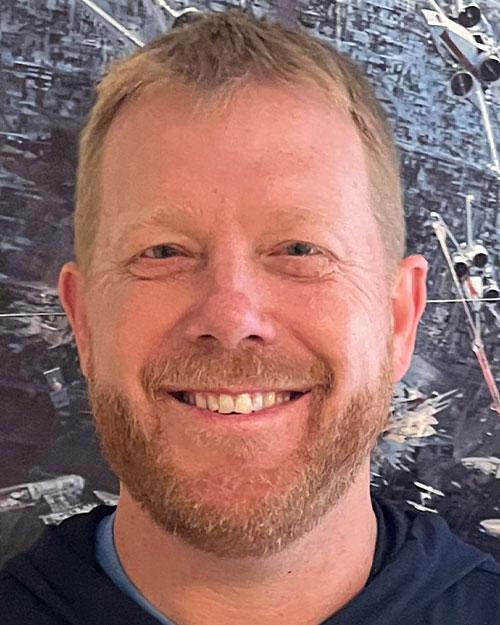Instructor Spotlight: Andrew West

Tell us a bit about your background and what inspired you to teach this course
I’m trained as an astronomer, but I have been fascinated by the space program since I was a child. I followed the Space Shuttle program closely and read as much as I could about the early missions of Project Mercury, Gemini, and Apollo.
During graduate school, I was fortunate to travel to the Kennedy Space Center in Florida each year to discuss my research, tour the facilities, and meet with former astronauts, many of whom traveled to the Moon. During my fellowship with the Astronaut Scholarship Foundation, Jim Lovell (an astronaut on Apollo 8 and 13, among other missions) was the foundation’s chair.
The Moon is our nearest neighbor, but I don’t think we always pay much attention to it. Above all, I want students to look up at the Moon and think about it differently than they did before. I want them to understand simple things like the phases and the basic geology. But mostly I want students to think about the grand adventure of traveling to the Moon and the amazing effort and technological leaps that made that possible.
What is one thing about the Moon that would surprise people?
The Moon is slowly moving away from the Earth by about a few centimeters per year. This means that a long time ago, the Moon was much closer and much bigger in the sky (imagine a Moon twice its current size).
This semester you’re bringing in actual Moon rocks! How did you get a hold of those and what will students observe from these specimens?
Yes, super cool! Seems like you shouldn’t have a class about the Moon without looking at Moon rocks. We have already looked at a meteorite from the Moon from my personal collection, but I’m really excited that NASA will be sending us several small rocks that were collected during the Apollo missions, along with some thin sections for examining with microscopes. NASA has a small number of educational kits that teachers and professors can apply to use in their classrooms, and I applied the moment this course was approved.
We will hopefully be working with the Department of Earth and Climate Sciences to look at the thin sections under magnification and compare them to similar Earth-based minerals.
Your class went to visit Tisch Special Collections. What did you go to view and what did it contribute to your course?
It was so fun. It was amazing for students (and me) to see and touch these books that are hundreds of years old. The Galileo manuscript includes the very first telescopic observations of the Moon, showing shadowed craters and features that NASA scientists revisited hundreds of years later while planning the first Moon missions. While in Special Collections, students were also sketching features on the Moon from the 1960s era lunar maps, and it was awesome to see the juxtaposition of the 17th and 20th century lunar maps in one room!
We also got the opportunity to do some print making from some astronomical themed wood blocks—what a fun night in the library!
What else is coming up in class that you’re excited about?
Since we already talked about Moon rocks and the Special Collections, I think I’m most excited about having students look at the Moon through my telescope. Looking at the craters of the Moon through a telescope can be life-changing, and I’m really excited about sharing that experience with my class. We will also be taking some pictures of the Moon, both for fond memories of the experience and to calculate the distance to the Moon.